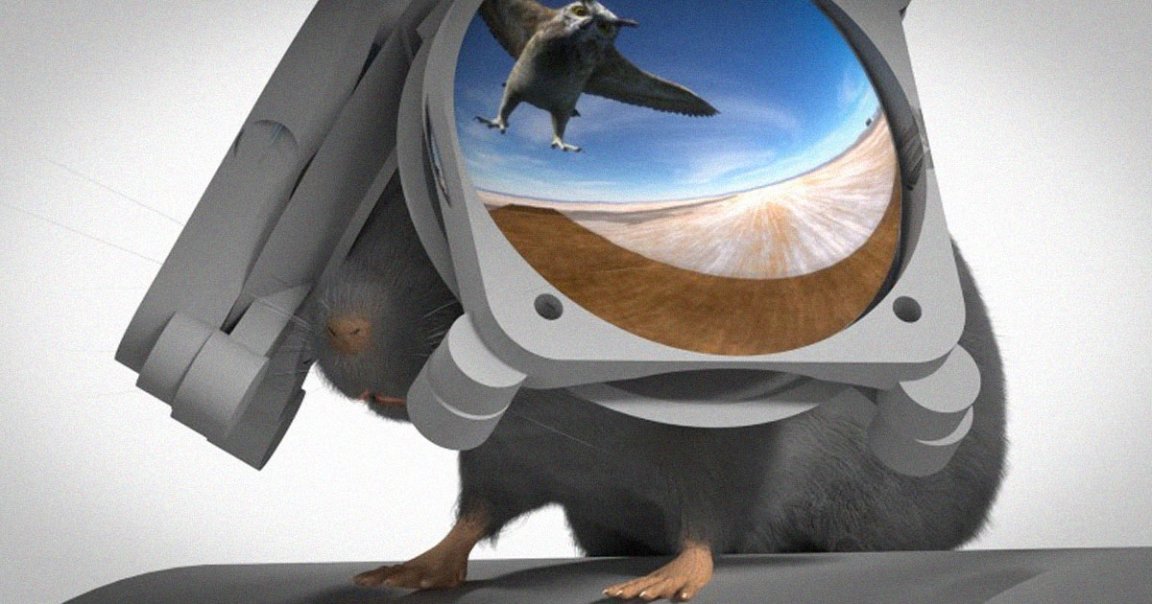
Despite being very low to the ground, mice are incredibly good at spotting an imminent threat like a hawk swooping down out of the sky.
To get a better sense of how this behavior works, researchers at Northwestern University have built a (relatively) massive pair of virtual reality goggles for mice to study how neurons in their brains form new memories in a lab setting.
The apparatus, dubbed the Miniature Rodent Stereo Illumination VR (iMRSIV), is essentially a scaled-down pair of high-resolution OLED screens that occupy the full 180-degree field of view of each of the mouse’s eyes while it’s moving on a tiny treadmill.
Instead of having the mice take on the weight of the whole apparatus, the goggles are stationary and essentially surround the entire mouse.
The researchers’ goal was to improve the level of immersion, something that traditional methods involving distant and conventional screens pointed at lab mice simply couldn’t do very well.
“We think [this] reduces their immersion in the virtual world,” Daniel Dombeck, Northwestern researcher and coauthor of a new paper about the work published in the journal Neuron, told The Guardian. “Also, there is no depth information provided by big screens; the mice just see the same flat scene as we do when we watch TV.”
“Now think about putting on VR goggles, like Oculus Rift, that take up your full vision,” Dombeck explained in a press release. “You don’t see anything but the projected scene, and a different scene is projected into each eye to create depth information. That’s been missing for mice.”
The system could allow scientists to record real-time brain activity while animals are engaged with external stimuli, something that has historically proved challenging.
However, the approach isn’t perfect. Even with a pair of VR goggles, “it takes a lot of training just to get the mice to pay attention to the screens and ignore the lab around them,” Dombeck said.
Nonetheless, the researchers found that the VR-immersed mice had the same parts of their brains activated as those roaming freely.
The mice learned quickly and “could already complete the task” of finding a reward after the “first session,” according to Dombeck.
Using the diminutive VR goggles, the team was able to simulate an overhead threat like an owl or hawk.
“The top of a mouse’s field of view is very sensitive to detect predators from above, like a bird,” said research specialist and co-first author Dom Pinke.
In response to the perceived threat, the mice either ran faster or froze in place.
“It’s not a learned behavior; it’s an imprinted behavior,” Pinke added. “It’s wired inside the mouse’s brain.”
Compared to much more unwieldy virtual reality setups, Dombeck is confident that the new approach could make other researchers’ lives much easier.
“We’re still working on improvements, but our goggles are small, relatively cheap and pretty user friendly as well,” he said in the statement. “This could make VR technology more available to other labs.”
More on VR: DARPA Seeks to Protect Virtual Reality Against “Cognitive Attacks”